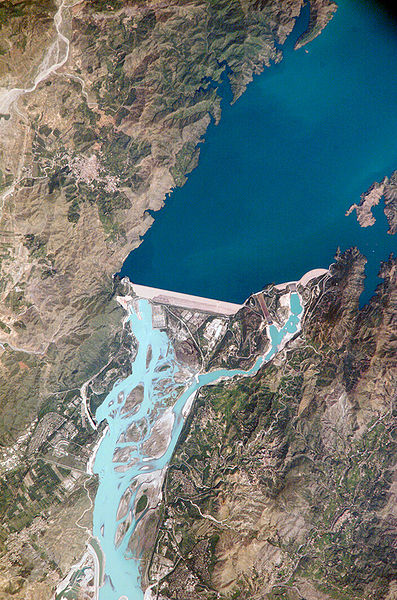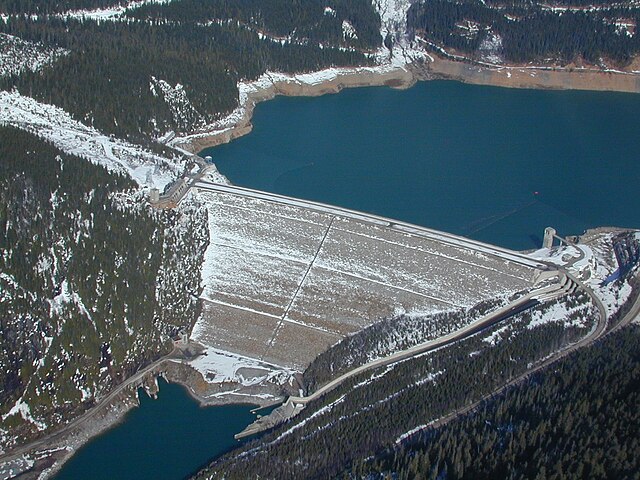The Teton Dam was an earthen dam in the western United States, on the Teton River in eastern Idaho. It was built by the U.S. Bureau of Reclamation, one of eight federal agencies authorized to construct dams. Located between Fremont and Madison counties, it suffered a catastrophic failure on June 5, 1976, as it was filling for the first time.
Dam failure on June 5, 1976
The dark brown streak on the dam face near the gray bedrock in the left half of the photo is a leak that formed on the morning of June 5. The speck above the leak near the top of the dam is a D9 bulldozer on its way to push soil into the leak.
Large amounts of mud are now spilling down the face of the dam, unchecked by the efforts of the bulldozer operators. The outlet works at the foot of the dam are flooding with muddy water.
The dam is now breached and muddy water flows violently over the dam face.
An embankment dam is a large artificial dam. It is typically created by the placement and compaction of a complex semi-plastic mound of various compositions of soil or rock. It has a semi-pervious waterproof natural covering for its surface and a dense, impervious core. This makes the dam impervious to surface or seepage erosion. Such a dam is composed of fragmented independent material particles. The friction and interaction of particles binds the particles together into a stable mass rather than by the use of a cementing substance.
Chatuge Dam in North Carolina.
Tarbela Dam in Pakistan. It is the largest earth-filled dam in the world.
The Mica Dam in Canada.
Tataragi Dam in Asago, Hyōgo Pref., Japan.








